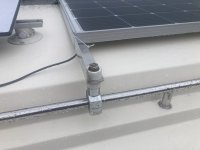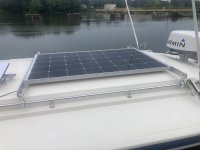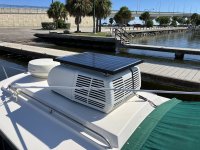KevinMc
Member
- Joined
- Sep 10, 2023
- Messages
- 36
- Reaction score
- 0
- C Dory Year
- 2006
- C Dory Model
- 23 Venture
- Vessel Name
- Sea~Dory~Able
Has anyone mounted solar panels on their cabin top, I am thinking about two rigid panels attached to the s/s,fore/aft hand rail. Seems better than drilling holes in the roof,any suggestions would be appreciated.




